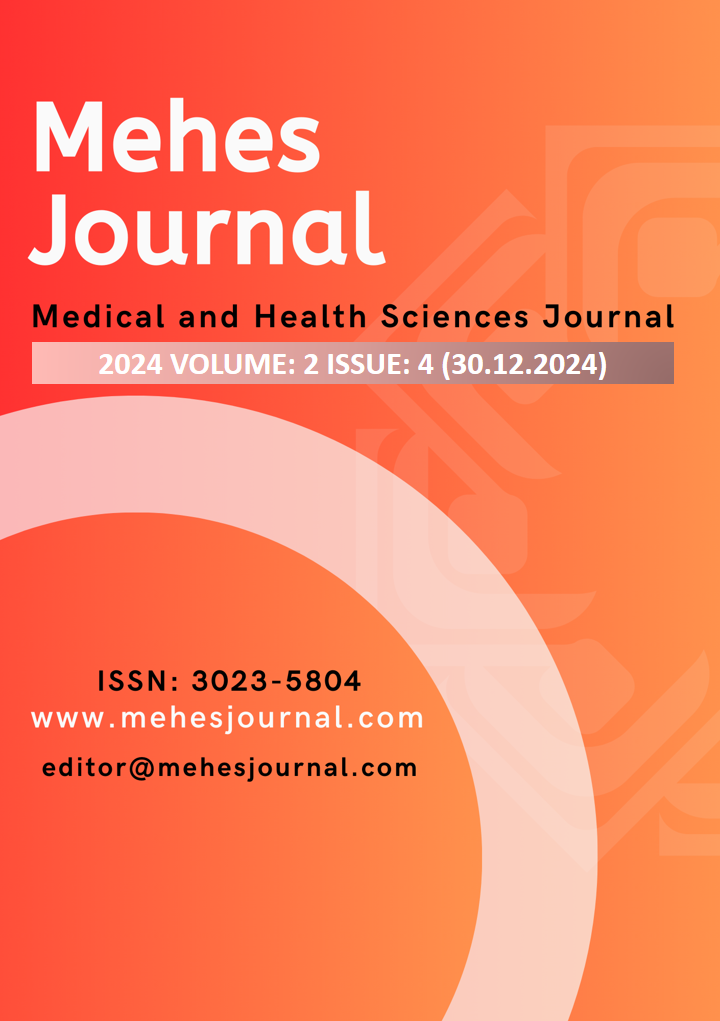Deep Hypothermic Circulatory Arrest: History, Clinical Implications and Strategies for Neurologic Protection
DOI:
https://doi.org/10.5281/zenodo.14569387Keywords:
Deep Hypothermic Circulatory Arrest (DHCA), Cardiopulmonary Bypass (CPB), Cerebral Protection, Pharmacological Support, Cardiovascular SurgeryAbstract
Deep hypothermic circulatory arrest (DHCA) is a critical technique utilized in complex cardiovascular surgeries to temporarily halt blood circulation by reducing body temperature. This approach enables surgeons to create a hemodynamically stable and motionless surgical field while ensuring cerebral protection and preserving organ function. The foundations of DHCA trace back to the 1950s, with Griepp et al. pioneering its application in aortic arch surgeries in 1975, thus laying the groundwork for modern utilization.
The clinical procedure involves three essential stages: initiation of cardiopulmonary bypass (CPB), induction of hypothermia, and implementation of circulatory arrest. CPB facilitates extracorporeal blood oxygenation and recirculation, while hypothermia significantly reduces metabolic rates by up to 90%, protecting organs under low oxygen conditions. Circulatory arrest is generally limited to 30–40 minutes. Cerebral protection techniques, including antegrade and retrograde cerebral perfusion, play a pivotal role in minimizing neurological complications.
Pharmacological interventions are integral to DHCA, providing neuroprotection and controlling inflammation. Barbiturates decelerate cerebral metabolism, steroids suppress inflammatory responses, and osmotic diuretics mitigate cerebral edema. Despite its efficacy and safety in contemporary surgical practice, DHCA requires meticulous monitoring and management to prevent complications. Future advancements in surgical protocols and pharmacological strategies hold promise for reducing associated risks and improving patient outcomes.
References
Ekinci S. Açık kalp ameliyatında hafif ve orta derece hipotermi uygulanan hastalarda böbrek fonksiyonlarının karşılaştırılması [tez]. İstanbul: İstanbul Medipol Üniversitesi Sağlık Bilimleri Enstitüsü; 2018. Erişim adresi: https://tez.yok.gov.tr/UlusalTezMerkezi/tezDetay.jsp?id=w2QlwlOquRm6GdTIVDb0Uw&no=KWDNZIf9xSk9NvRxCqSqnQ
Griepp RB, Stinson EB, Hollingsworth JF, Buehler D. Prosthetic replacement of the aortic arch. J Thorac Cardiovasc Surg. 1975;70(6):1051–1063. doi: 10.1016/S0022-5223(19)41098-0.
Lewis FJ, Taufic M. Closure of atrial septal defects with the aid of hypothermia; experimental accomplishments and report of one successful case. Surgery. 1953;33(1):52–59. PMID: 13013833.
Safi HJ, Miller CC, Huynh TT, Estrera AL, Porat EE. Distal aortic perfusion and cerebrospinal fluid drainage for thoracoabdominal and descending thoracic aortic repair: Ten years of organ protection. Ann Surg. 2003;238(3):372–380. doi: 10.1097/01.sla.0000086662.92853.9c.
Türk Göğüs Kalp Damar Cerrahisi Dergisi. Açık kalp cerrahisi geçiren hastalarda gelişen asendan aort diseksiyonları. Türk Göğüs Kalp Damar Cerrahisi Dergisi. 2003;11(2):157–160. Erişim adresi: https://tgkdc.dergisi.org/abstract.php?id=469.
Demirağ MK. Hipotermi ve derin sirkulatuar arrest. Türkiye Klinikleri Kalp Damar Cerrahisi - Özel Konular. 2013;5(1):1–4. Erişim adresi: https://www.turkiyeklinikleri.com/article/tr-hipotermi-derin-sirkulatuar-arrest-64405.html.
Yüksek A. Derin hipotermi ve sirkülatuar arrest. Türkiye Klinikleri Kardiyovasküler Cerrahi - Özel Konular. 2012;4(2):57–60. Erişim adresi: https://www.turkiyeklinikleri.com/article/tr-derin-hipotermi-ve-sirkulatuar-arrest-63219.html.
Ghunaim AH, Aljabri B, Dohain A, Althinayyan GS, Aleissa AI, Alshebly AT, et al. Effect of the duration of deep hypothermic circulatory arrest on the neurodevelopmental outcomes in children undergoing cardiac surgery. Pediatr Rep. 2024;16(3):753–62. doi: 10.3390/pediatric16030063.
Tweddell JS, Hoffman GM, Mussatto KA, Fedderly RT, Berger S, Jaquiss RD, et al. Improving survival in patients undergoing palliation for hypoplastic left heart syndrome: Lessons learned from 115 consecutive patients. Circulation. 2002;106(12 Suppl 1):I82–9. doi: 10.1161/01.cir.0000032878.55215.bd.
Fuller S, Nord AS, Gerdes M, Wernovsky G, Jarvik GP, Bernbaum J, et al. Predictors of impaired neurodevelopmental outcomes at one year of age after infant cardiac surgery. Eur J Cardiothorac Surg. 2009;36(1):40–7. doi:10.1016/j.ejcts.2009.02.049.
Uzark K, Lincoln A, Lamberti JJ, Mainwaring RD, Spicer RL, Moore JW. Neurodevelopmental outcomes in children undergoing functional single ventricle Fontan repair. Pediatrics. 1998;101(4):630–3. doi: 10.1542/peds.101.4.630.
Bellinger DC, Wypij D, Kuban KC, Rappaport LA, Hickey PR, Wernovsky G, et al. Developmental and neurological status of children at 4 years of age after heart surgery with hypothermic circulatory arrest or low-flow cardiopulmonary bypass. Circulation. 1999;100(5):526–32. doi: 10.1161/01.CIR.100.5.526.
Pigula FA, Nemoto EM, Griffith BP, Siewers RD. Regional low-flow perfusion provides cerebral circulatory support during neonatal aortic arch reconstruction. J Thorac Cardiovasc Surg. 2000;119(2):331–9. doi: 10.1016/S0022-5223(00)70264-1.
Kosiorek A, Donofrio MT, Zurakowski D, Reitz JG, Tague L, Murnick J, et al. Predictors of neurological outcome following infant cardiac surgery without deep hypothermic circulatory arrest. Pediatr Cardiol. 2022;43(1):62–73. doi: 10.1007/s00246-021-02745-3.
Visconti KJ, Rimmer D, Gauvreau K, del Nido P, Mayer JE Jr, Hagino I, et al. Regional low-flow perfusion versus circulatory arrest in neonates: one-year neurodevelopmental outcome. Ann Thorac Surg. 2006;82(6):2207–13. doi: 10.1016/j.athoracsur.2006.05.081.
Downloads
Published
How to Cite
Issue
Section
License
Copyright (c) 2024 MEHES JOURNAL

This work is licensed under a Creative Commons Attribution 4.0 International License.










